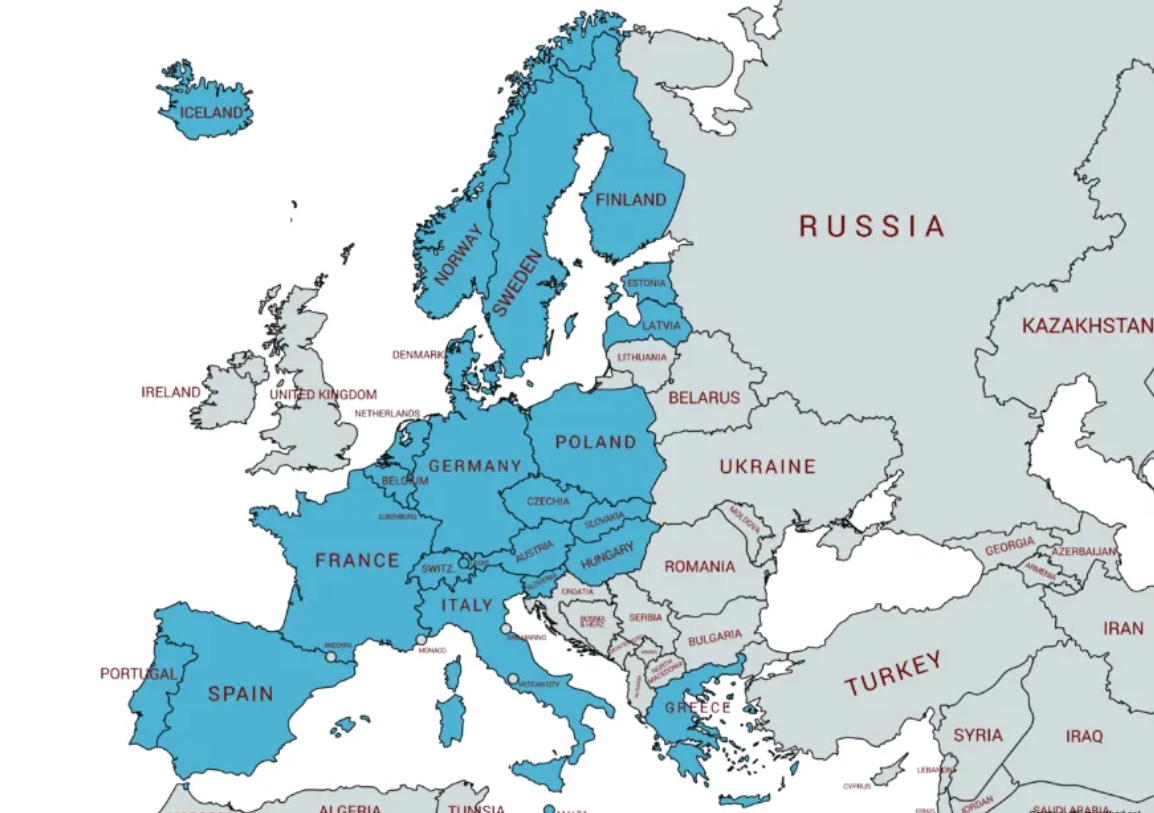Romania and Bulgaria Partially Join Schengen Area
On 1 April 2024, Romania and Bulgaria partially joined the Schengen Area, Europe’s ID-check-free travel zone. This marks a significant step in the two countries’ integration with the European Union (EU).
However, land border checks will remain in place due to opposition from Austria, which has long blocked their bid over concerns about illegal migration.
Background
Romania and Bulgaria joined the EU in 2007, while Croatia joined in 2013. The Schengen Area, established in 1985, comprised 23 of the 27 EU member countries, along with Switzerland, Norway, Iceland, and Liechtenstein before the partial admission of Romania and Bulgaria.
Around 3.5 million people cross an internal border each day within the Schengen Area.
Criteria for Accession
The European Commission has stated for more than a decade that Romania and Bulgaria meet the technical criteria for full accession to the Schengen Area. Full accession requires unanimous support from all member states.
Both countries have agreed to implement random security screening at airports and maritime borders to combat illegal migration and cross-border crime.
Impact on Travel and Economy
The lifting of border controls is expected to facilitate operations at Bulgaria’s four international airports, which saw nearly 11 million passengers in 2023. The Sofia airport serves as the biggest hub for Schengen flights, constituting 70% of all flights. The eased regulations are expected to positively impact the tourism sector in both countries.
Concerns and Challenges
Members of the European Parliament have expressed concerns about long queues at the EU’s land borders and the impact on trade in the bloc’s single market, as well as the health and safety of drivers.
Truck drivers frequently face delays at the borders of Romania and Bulgaria, with the Union of International Carriers in Bulgaria estimating that these delays cost the sector tens of millions of euros each year.
Future Plans
Romanian Prime Minister Marcel Ciolacu has stated that the government has a clear plan for full accession to the Schengen Area by the end of 2024. Bulgaria’s interior minister, Kalin Stoyanov, has also affirmed that Bulgaria’s full accession will happen by the end of 2024, emphasizing the country’s commitment to deterring illegal migrants from taking the road to Europe through Bulgaria.
About Schengen Area
The Schengen Area covers a population of over 420 million people and an area of 4,312,099 square kilometers (1,664,911 square miles). The Schengen Agreement was signed on 14 June 1985 by five of the ten member states of the then European Economic Community (EEC) near the town of Schengen in Luxembourg.
The Schengen Area operates very much like a single jurisdiction for international travel purposes, with external border controls for travellers entering and exiting the area, and common visas, but with no internal border controls.
About Romania
Romania is in southeastern Europe. Its capital and largest city is Bucharest. The country is home to the Carpathian Mountains, the Danube River, and the Black Sea coast. Romania has a population of around 19 million people and is a member of the European Union. The official language is Romanian, a Romance language closely related to Italian, French, and Spanish.
About Bulgaria
Bulgaria is situated in the Balkan region of Europe, bordering Romania to the north and Turkey to the south. Its capital and largest city is Sofia. Bulgaria has a population of approximately 7 million people and is known for its beautiful beaches along the Black Sea coast, ski resorts in the mountains, and ancient historical sites. The country has a rich history spanning from the Thracian civilization to the Ottoman Empire. Bulgarian is the official language.
Month: Current Affairs - March, 2024
Category: International / World Current Affairs








